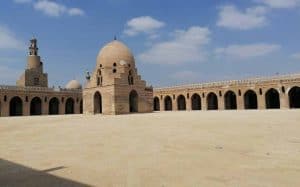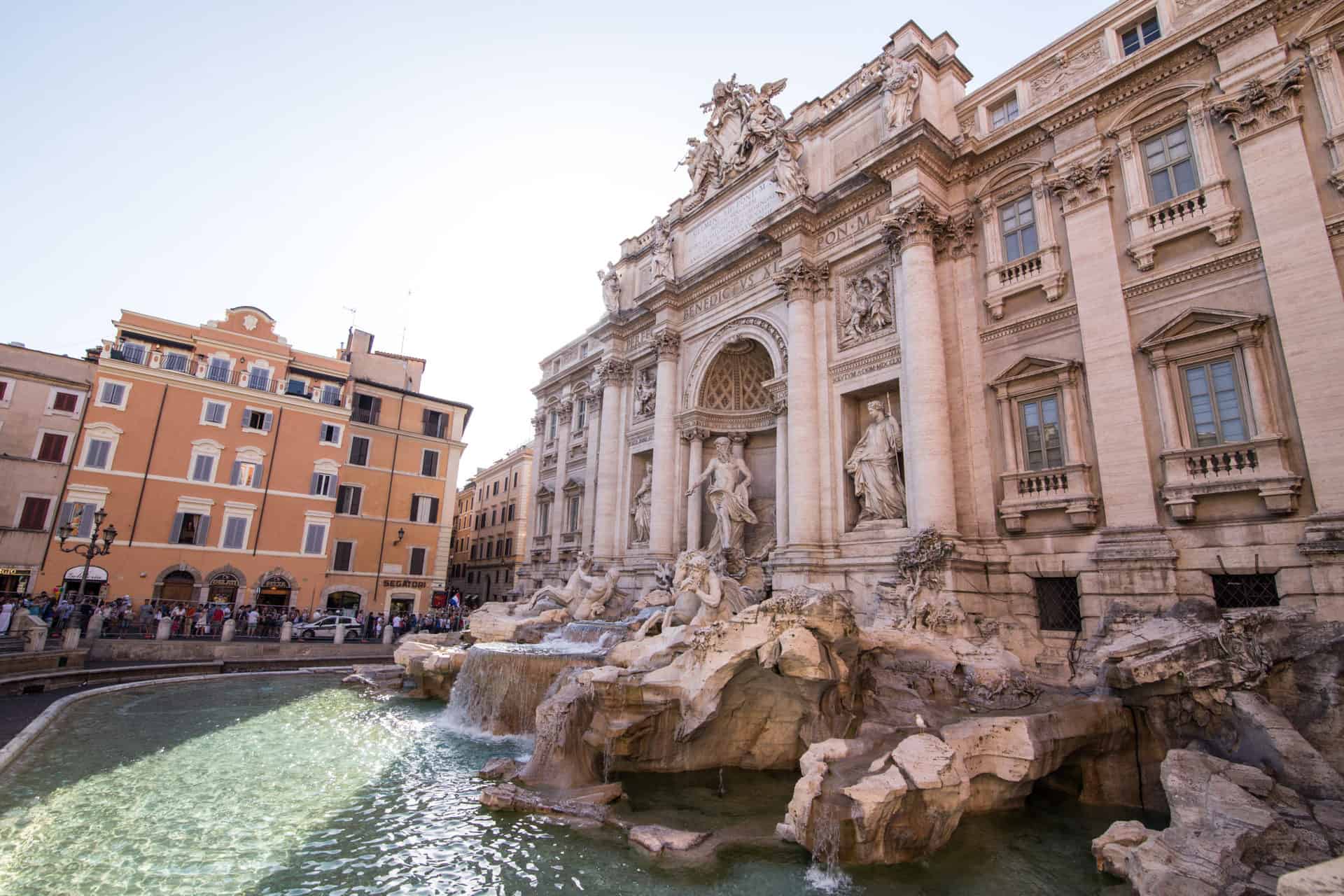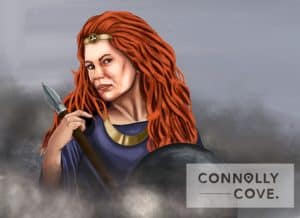The Life and Legacy of Robert the Bruce: Scotland’s Heroic King

Updated On: May 02, 2024 by Raghda Elsabbagh
Ever found yourself a wee bit bewildered navigating the rich Scottish history, striving to discern truth from folklore? That is us, too, particularly with Scotland’s valiant King Robert the Bruce.
King Robert the Bruce, also known as Robert I of Scotland, was a significant figure in Scottish history, particularly during the late 13th and early 14th centuries. He is best known for his role in the Wars of Scottish Independence against England.

Our immersive exploration of his illustrious past inspired us to admire his battles for independence and how he dramatically transformed Scotland’s destiny. So, grab your brew, make yourself comfortable and prepare for a thrilling historical voyage that will indelibly reshape your understanding of this revered monarch!
Table of Contents
Early Life of Robert the Bruce
Robert the Bruce was born into a noble Scottish family and grew up during a time of great political turmoil. He embraced his family’s legacy and became deeply involved in the fight for Scottish independence from England. Despite facing numerous challenges, he eventually rose to become the Earl of Carrick.
Birth and Childhood
Robert the Bruce was born in July 1274 into a noble powerful Scottish family with significant holdings and influence. His dad was Robert de Brus, 6th Lord of Annandale, who held substantial lands and titles in Scotland, including the lordship of Annandale and estates in Carrick and his mum was Marjorie, Countess of Carrick. As a child, he learned about fighting and being a leader from his father. Young Robert grew up with tales of bravery and freedom for Scotland. These stories shaped him into the man who would fight for his country’s freedom later on.
The “Great Cause”
One of the significant events in Robert the Bruce’s early life was his involvement in the “Great Cause” — a movement that aimed to restore Scotland’s independence from English rule.
The “Great Cause” refers to the period of Scottish history marked by a succession crisis that unfolded after King Alexander III of Scotland’s death in 1286. This crisis ultimately led to a series of events that significantly influenced Scottish politics and relations with England.
King Alexander III’s unexpected death without a surviving male heir left Scotland without a clear successor to the throne. This situation set the stage for a power struggle among various claimants and rival factions within Scotland, as well as interference from England.
The contenders for the Scottish throne during the Great Cause included:
- Margaret, Maid of Norway: Initially recognised as the heir to the Scottish throne, Margaret was the granddaughter of Alexander III. However, her sudden death in 1290 while en route to Scotland intensified the succession crisis.
- John Balliol: Backed by powerful Scottish nobles who sought to maintain their independence from English influence, John Balliol was ultimately chosen as King of Scots in 1292. His reign, however, was marked by tension with England and internal strife.
- Robert Bruce, 5th Lord of Annandale (Robert the Bruce’s grandfather): Robert Bruce was another claimant to the throne, supported by factions within Scotland who sought a strong ruler to counter English interference.
- John Hastings: Another claimant supported by English interests, John Hastings represented the pro-English faction within Scotland.
The competing claims and English involvement in the Scottish succession led to King Edward I of England intervening as a mediator. Edward I ultimately asserted his authority over the process, effectively making Scotland a vassal state of England.
Robert the Bruce initially supported the English king, Edward I, against Scottish uprisings. However, his allegiance shifted after the murder of John Comyn, a rival claimant to the Scottish throne. As a nobleman turned outlaw hero, Bruce joined forces with other Scottish leaders who were fighting for their country’s freedom.
Edward I’s interference and attempts to dominate Scottish affairs eventually sparked the Scottish Wars of Independence, notably against Robert the Bruce (later King Robert I) and William Wallace. These conflicts were driven in part by Scotland’s resistance to English domination and efforts to assert its own sovereignty.
The Great Cause, therefore, represents a critical juncture in Scottish history, highlighting the struggle for independence and self-determination amid external pressures from England. It laid the groundwork for the subsequent conflicts that defined Scotland’s fight for autonomy and national identity during the medieval period.
Robert the Bruce’s determination and desire for Scottish independence set him on a path that would eventually lead him to become King of Scots and secure his country’s independence from England. The “Great Cause” played a crucial role in shaping Robert the Bruce’s legacy as a national hero and symbol of Scottish sovereignty.
Becoming Earl of Carrick
Robert the Bruce’s path to the earldom of Carrick began with the death of his maternal grandfather, Neil Campbell, the Earl of Carrick, around 1292. Neil Campbell had no male heirs, so the earldom of Carrick was inherited by Robert the Bruce’s mother, Marjorie, as the rightful heir. This made Robert the Bruce the heir presumptive to the earldom.
In 1292, when King Edward I of England intervened in the Scottish succession crisis (known as the “Great Cause”), Robert’s father initially supported John Balliol’s claim to the Scottish throne. However, when Edward I asserted dominance over Scotland, Robert’s father shifted his allegiance to Edward I, aligning with the English king’s interests.
Following the death of his father in 1295, Robert the Bruce (the younger) began to navigate the complex political landscape of Scotland. He eventually shifted his allegiance away from Edward I and aligned himself with the Scottish cause for independence. Robert’s strategic marriage to Elizabeth de Burgh, the daughter of an influential Irish noble, further solidified his position and alliances within Scotland.
In 1298, Robert’s mother, Marjorie, passed away, and he formally assumed the title and responsibilities of the Earl of Carrick. This elevation in status significantly increased Robert’s influence and power within the Scottish nobility. He took this role seriously and saw it as an opportunity to further the cause of Scottish independence.
Robert the Bruce’s tenure as Earl of Carrick overlapped with a turbulent period in Scottish history marked by clashes with England and internal strife among competing factions. His eventual claim to the Scottish throne and his subsequent actions during the Wars of Independence against England would redefine his legacy and secure his place as one of Scotland’s most celebrated historical figures.
The Reign and Legacy of Robert the Bruce
In 1306, Robert the Bruce famously seized the Scottish throne and was crowned King of Scots. This move intensified the conflict with England, leading to a long and brutal struggle for Scottish independence. Despite initial setbacks, including defeat at the Battle of Methven in 1306, Robert the Bruce persevered.
During his reign, Robert the Bruce led Scotland in the Wars of Independence, culminating in the legendary Battle of Bannockburn where he secured Scotland’s independence from England.
Wars of Independence
The Wars of Independence were a crucial part of Robert the Bruce’s reign and legacy. They were a series of conflicts between Scotland and England, where the Scots fought to secure their independence from English rule during the late 13th and early 14th centuries.
These wars were primarily driven by Scotland’s desire for autonomy and resistance against English attempts to assert control over Scottish affairs. The wars culminated in Scotland’s eventual recognition as an independent kingdom.
Key events and prominent figures during the Wars of Independence include:
First War of Independence (1296-1328):
- Battle of Stirling Bridge (1297): This pivotal battle saw William Wallace and Andrew Moray’s Scottish forces achieve a significant victory over the English army led by John de Warenne, Earl of Surrey.
- Battle of Falkirk (1298): William Wallace’s forces were defeated by King Edward I of England, leading to a setback for the Scottish cause.
- Robert the Bruce’s Rise (1306): After being crowned King of Scots in 1306, Robert the Bruce initiated a guerrilla campaign against the English occupiers, marking a new phase in the resistance.
- Battle of Bannockburn (1314): One of the most significant battles of the Wars of Independence, where Robert the Bruce decisively defeated a larger English army led by Edward II, securing Scottish independence.
Second War of Independence (1332-1357):
- Battle of Dupplin Moor (1332): A significant victory for the pro-English faction in Scotland, led by Edward Balliol, against supporters of King David II of Scotland.
- Battle of Halidon Hill (1333): Edward III of England decisively defeated the Scots under David II’s regent, leading to English dominance in Scotland for several years.
- David II’s Return (1341): After years of English influence, David II returned to Scotland and resumed efforts to reclaim Scottish territories.
Notable figures and leaders during the Wars of Independence include:
- William Wallace: A key Scottish leader known for his role in early battles against the English, such as the Battle of Stirling Bridge.
- Robert the Bruce (Robert I of Scotland): Asserted his claim to the Scottish throne and led successful campaigns against the English, culminating in the Battle of Bannockburn (1314).
- Edward I of England (“Longshanks”): Played a central role in English attempts to subjugate Scotland, including his defeat of William Wallace and subsequent campaigns.
- Edward II of England: Faced setbacks against Scottish forces under Robert the Bruce, leading to losses at battles like Bannockburn.
- David II of Scotland: Faced challenges during his reign, including English incursions and internal strife.
The Wars of Independence were characterised by a series of battles, sieges, alliances, and betrayals, ultimately shaping the course of Scottish and English history. Today, these wars are remembered as a testament to Scottish resilience of figures like Robert the Bruce and the determination of the Scottish people played crucial roles in securing Scotland’s status as an independent kingdom by the Treaty of Edinburgh-Northampton in 1328, which recognised Scottish sovereignty.
Battle of Bannockburn
Robert the Bruce’s most notable military success came in 1314 at the Battle of Bannockburn during the First War of Scottish Independence, where he decisively defeated a much larger English army led by King Edward II. This victory was a turning point in the Wars of Independence and secured Robert’s position as the King of an independent Scotland.
The battle was fierce, but the Scots fought with courage and determination. In the end, they emerged victorious and secured a major victory for Scotland’s independence. The Battle of Bannockburn is remembered as a turning point in the fight against English rule, and it remains an important event in Scottish history.
Robert the Bruce’s reign was marked by efforts to consolidate Scottish sovereignty and establish stability. His reign also saw the Declaration of Arbroath in 1320, a significant document asserting Scotland’s independence to the Pope.
Death and Aftermath
After years of fighting for Scotland’s independence, Robert the Bruce passed away in 1329. His death marked the end of an era and left a lasting impact on Scottish history. Although he is no longer with us, his legacy lives on. Despite his relatively short reign, his determination and military prowess were instrumental in securing Scotland’s independence and freedom from English rule. Today, Robert the Bruce is revered as a national hero and symbol of Scottish sovereignty.
Even centuries later, people still remember him as the king who freed Scotland and fought for the rights of his countrymen. Robert the Bruce’s story has been immortalised in various forms of media, including films like Outlaw King on Netflix.
Commemoration and Monuments
Scotland commemorates the life and legacy of Robert the Bruce through various monuments and memorials. One prominent example is the statue of Robert the Bruce at Bannockburn, near Stirling, where he led Scotland to victory in 1314.
This statue symbolises his leadership and bravery in securing Scotland’s independence. Another notable monument is Dunfermline Abbey, where Robert the Bruce is buried alongside other Scottish monarchs.
Visitors can pay their respects and learn about his significant role in Scottish history. These monuments honour his fight for freedom and serve as reminders of Scotland’s resilient spirit.
In a nutshell, Robert the Bruce was a heroic king who fought for Scotland’s independence. His leadership and determination led to victory at the Battle of Bannockburn, securing freedom from English rule. His legacy as a symbol of Scottish sovereignty lives on, inspiring generations to come.
FAQs
Who was Robert the Bruce?
Robert the Bruce was a heroic king who fought for the people and secured Scotland’s independence during the Scottish medieval period.
Why is Robert the Bruce important in Scottish culture?
He is a revered figure in Scottish folklore as he restored Scotland’s independence, an act that remains central to Scottish nationalism and culture today.
Was Robert the Bruce crowned king of Scots?
Yes, he became a famed warrior before being crowned king of Scots, leading his country with bravery and strength.
How did Robert’s actions impact Scotland?
His fight for freedom left a tangled legacy that shaped modern patriotism while keeping alive notions of bravery like William Wallace — popularly framed as Braveheart — within every Scot.
Is there any link between Robert the Bruce and the Scottish Royal Family?
Even though centuries have passed since his reign ended, his powerful role in history still echoes through time influencing parts of today’s Scottish royal family’s heritage.






